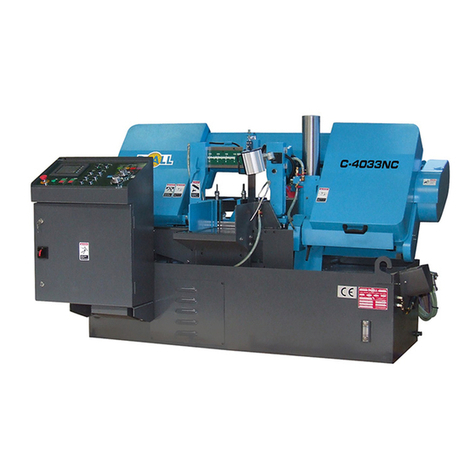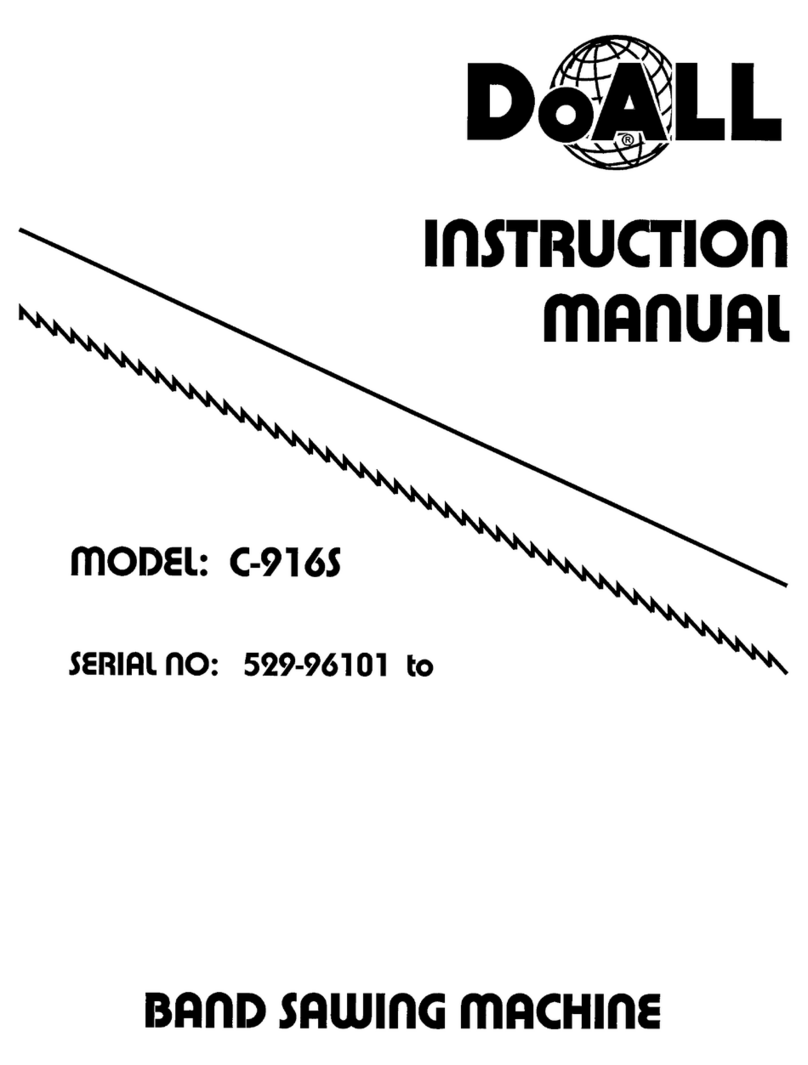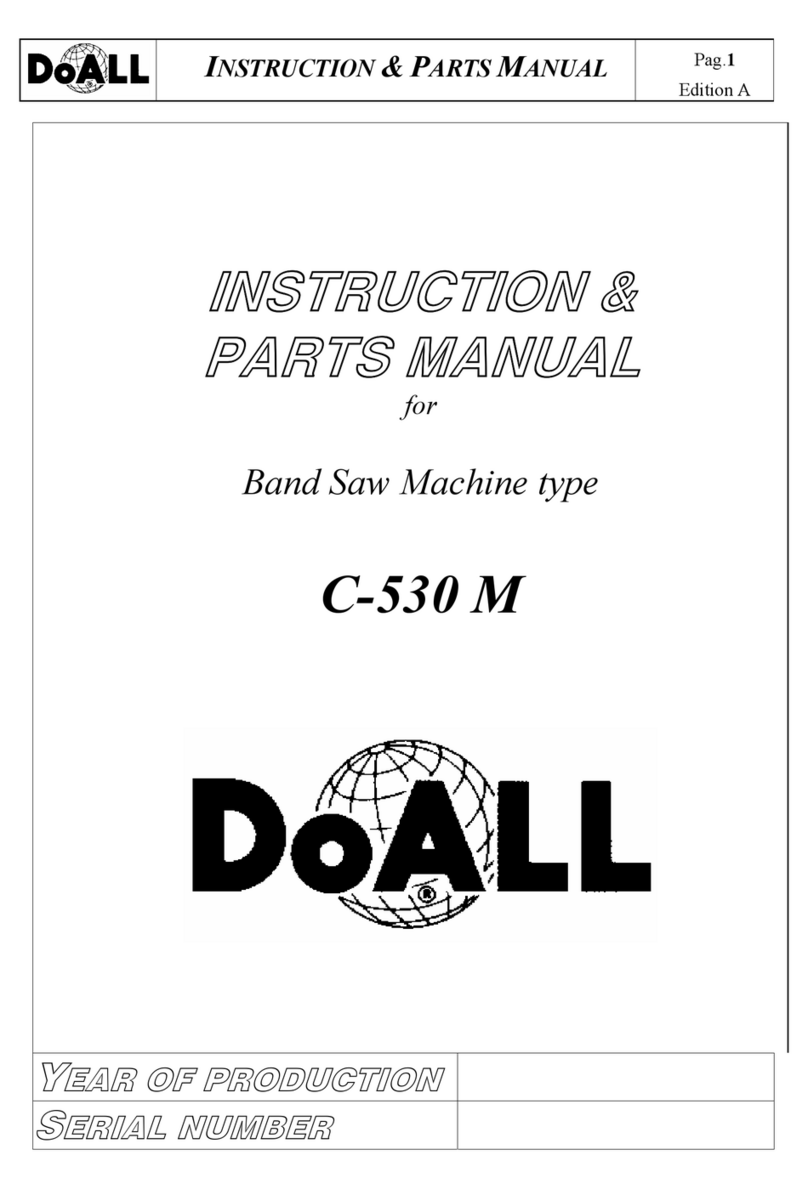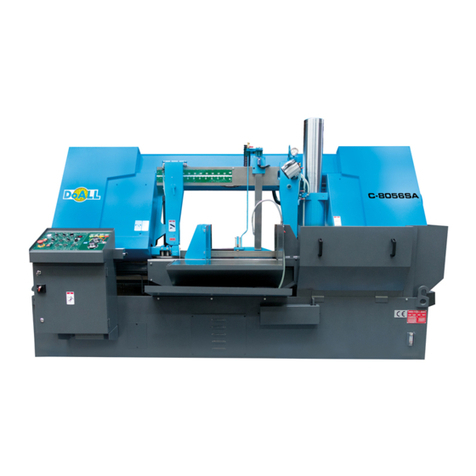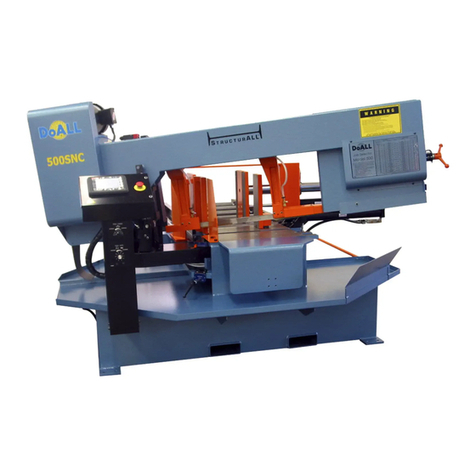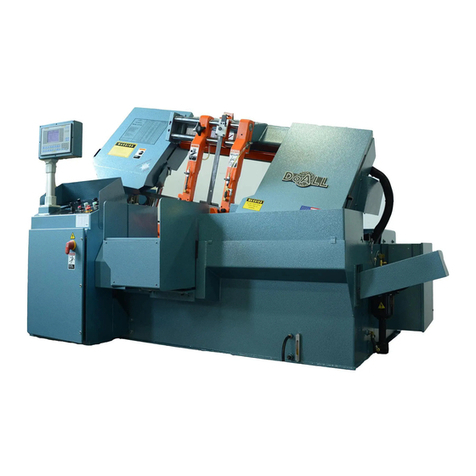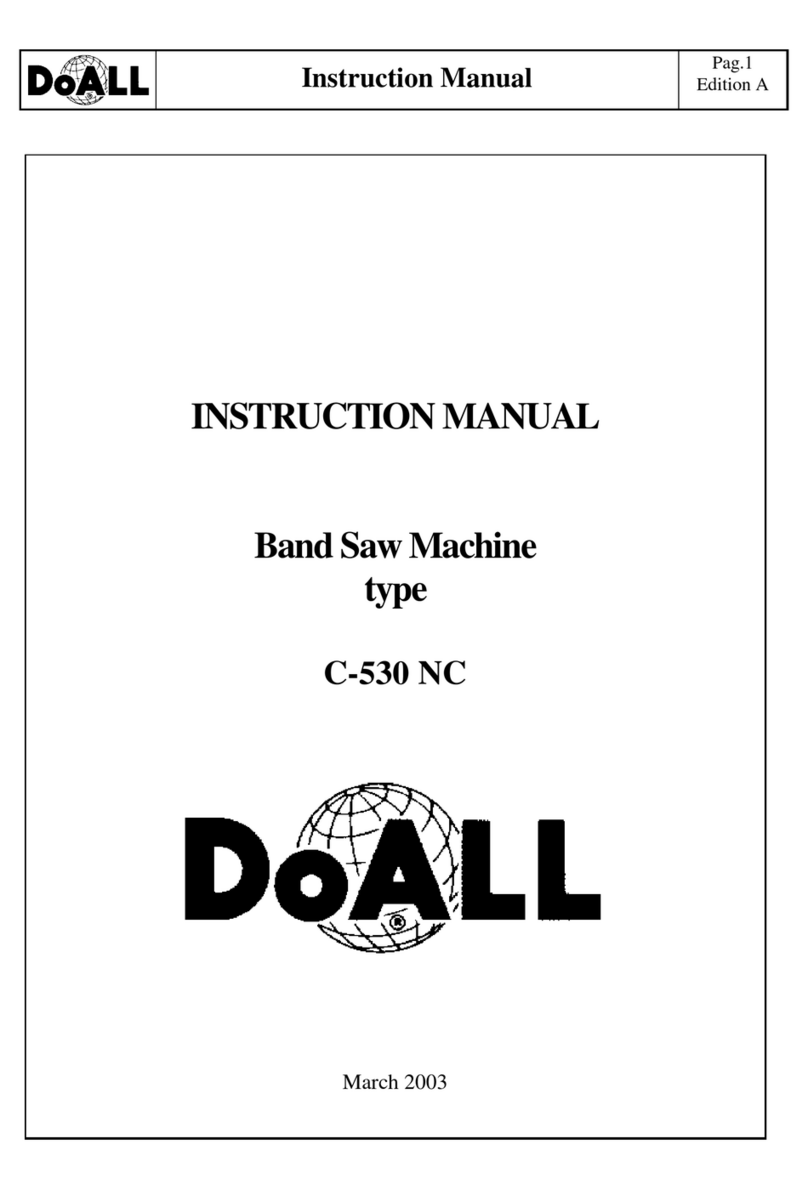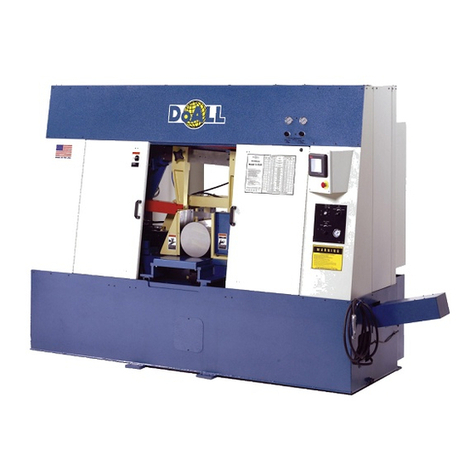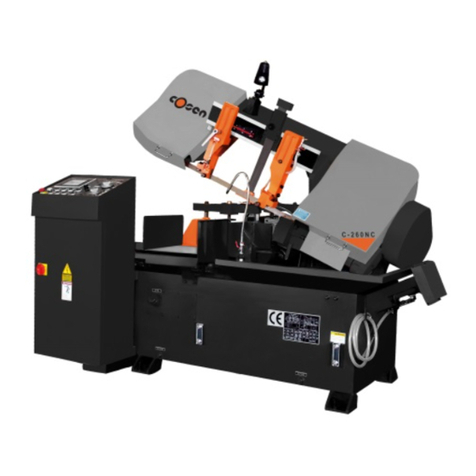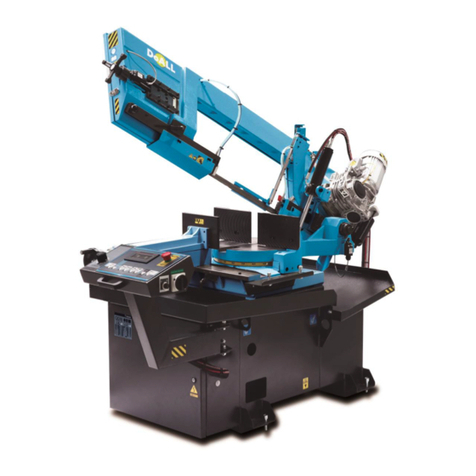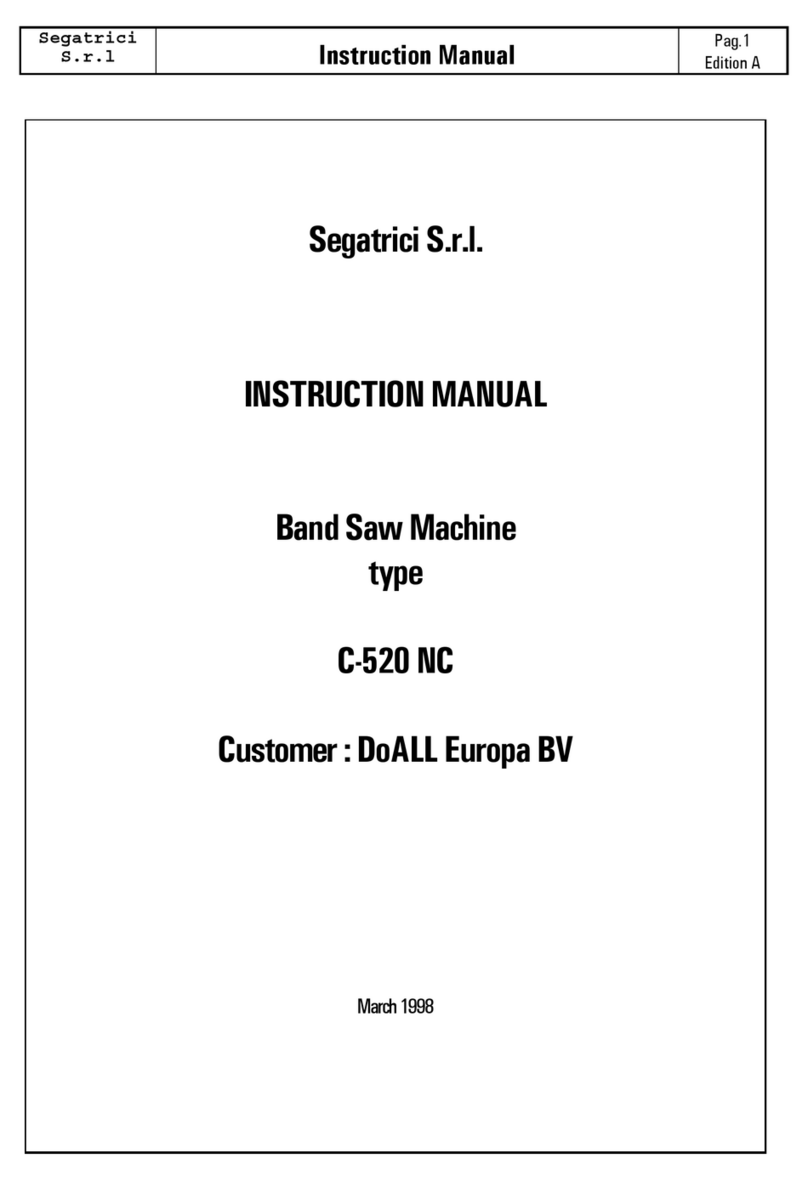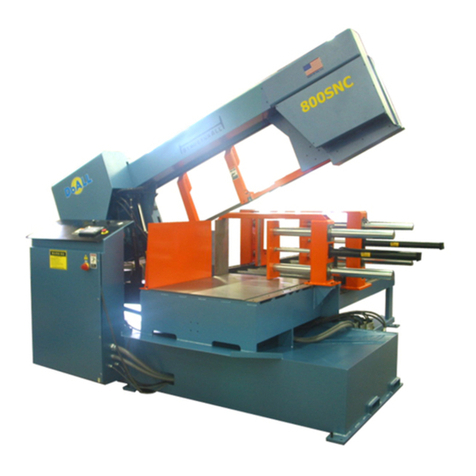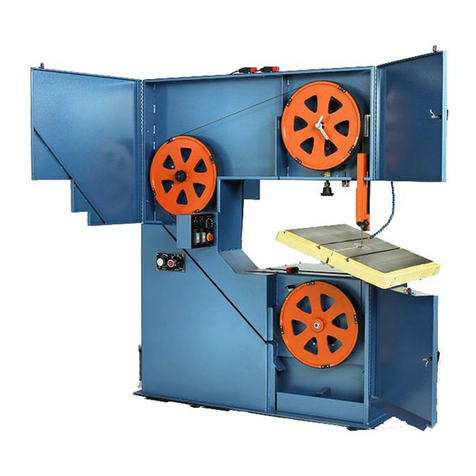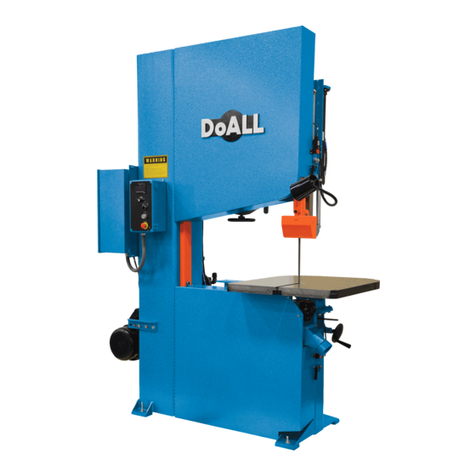
ii
TABLE OF CONTENTS
MACHINE DIMENSIONS
Floor Plan ............................................................... 1
Front View .............................................................. 2
MACHINE FEATURES
Front View .............................................................. 3
INSTALLATION
Location .................................................................. 4
OSHA Notice!! ........................................................ 4
Unpacking ............................................................... 4
Cleaning ................................................................. 4
Lifting ...................................................................... 4
Machine Installation and Alignment ........................ 4-5
Electrical Installation ............................................... 5
Preparation for Use ................................................ 5
OPERATION
Safety Precautions ................................................. 6
Using the Job Selector ........................................... 6
Electrical Controls ................................................... 7
Band Speed Controls ............................................. 7
Saw Band Preparation ............................................ 7-9
Post Adjustment ...................................................... 9
Worktable and Tilt Adjustment ................................ 9-10
Wheel Brush and Chip Removal ............................ 10
Typical Sawing Procedures .................................... 10-11
LUBRICATION
Lubrication Chart .................................................... 12
Lubrication Diagram ............................................... 13
MAINTENANCE
Replacing Crowned Bandwheel Tires ..................... 14
Insert-Type Saw Guides ......................................... 14
Electric Motors ........................................................ 14
Head Components .................................................. 14
Transmission .......................................................... 14
Wheel Brush ........................................................... 14
Machine Cleaning ................................................... 14-15
Band Drive Belt ....................................................... 15
Mist Coolant ............................................................ 15
Band Mist Lubricator ............................................... 15
TROUBLE SHOOTING .................................. 16-17
ACCESSORIES
Disc Cutter .............................................................. 18
Miter No. 2 Cut-Off (Side Mount) ............................ 18
Rip Fence ............................................................... 18
Heavy Work Slides ................................................. 18-19
Workholding Jaws .................................................. 19
Air-Operated Power Feed ....................................... 19
Chip Blower ............................................................ 20
Mist Coolant ............................................................ 20
Band Mist Lubricator ............................................... 20
Worklight ................................................................. 20
Magnier ................................................................. 20
Post Elevating Handwheel ...................................... 20
Worktable Options .................................................. 20-21
Air-Powered Worktable ........................................... 21
DBW-15 Buttwelder ................................................ 21
Optional Saw Guide Blocks .................................... 21-23
90º Saw Guide Brackets ......................................... 23
Adjustable Angle Saw Guides ................................ 23
Dust Spout .............................................................. 24
Material Handling Equipment ................................. 24
How to read your serial number:
